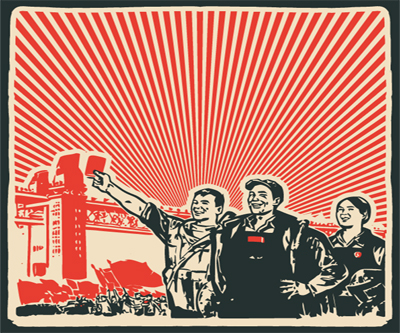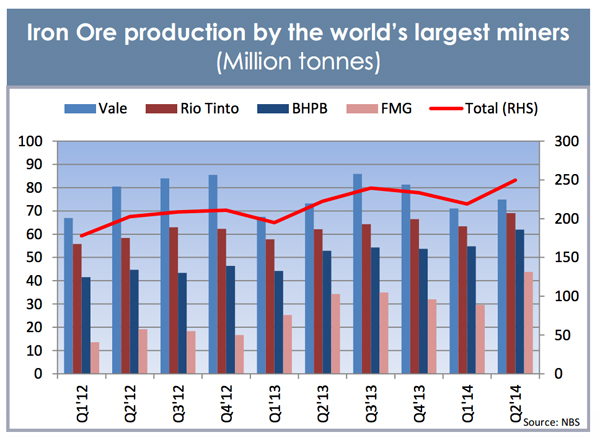
After results that beat already high expectations, Sam Walsh, CEO of Rio Tinto said the company’s iron ore business – making up more than 90% of profits at the Anglo-Australian giant – is positioned to thrive despite the 30% drop in the price of the steelmaking raw material.
Walsh expects 125 million tonnes of high-cost iron ore supply to be taken out of the market this year, as the lower price forces out low-grade Chinese mines and smaller producers cut output.
That may prove to be an optimistic assessment.
Benchmark Northern China 62% Fe imports has been trading below $100 a tonne since mid-May and the slump in the price has already seen a number of miners outside China fall by the wayside including Sweden’s Northland Resources, Australia’s Cairn Hill and Canada’s Labrador Iron Mines.
But China’s hundreds of small miners are not necessarily following the playbook.
The Steel Index, responsible for benchmark pricing of iron ore and coking coal in the region – in its latest research report points out that crude ore production in China actually rose during the first half of the year.
June data from China’s National Bureau of Statistics (NBS) showed a more than 7% increase in the volume of crude ore being mined in June. Output – of unknown grade – in the first six months of 2014 reached 710.6 million tonnes.
TSI says that while some smaller miners in China have shut down as a result of the falling iron ore price, local governments have been supporting larger operations with tax breaks and other measures.
For more Chinese producers to exit the market the price may have to go lower and stay there for longer. The iron ore price is on course to suffer the first quarter of an average price in double digits since 2009.
But a sustained period below $80 a tonne may be what it takes to see substantial cuts in China (and elsewhere) – especially 125 million tonnes at 62% which is presumably what Walsh was referring to.
With a price in the mid-90s the world’s top producers that can make money at less than half that level, have been increasing output at an insane rate.

Source: TSI
After a slow 2013, top producer Vale (NYSE:VALE) is also hitting a higher gear with output rising 13% to 79.4 million tonnes over the same period. Vale’s longer term target is 400 million tonnes a year as its giant S11 expansion comes on stream.
Output at BHP Billiton (LON:BHP), the world’s third largest producer, jumped 19% to 56.6 million tonnes in the three months to June. The company is on track to produce 245 million tonnes for the year, way ahead of expectations.
Number 4 Fortescue Metals Group (ASX:FMG), Australia’s fastest-growing iron ore miner, produced 38.7 million tonnes in the second quarter, 54% more than in April-June 2013.
Australia’s government forecaster predicts that by 2015 top producers will account for 83% or 1.15 billion tonnes of the global seaborne trade, displacing smaller rivals.